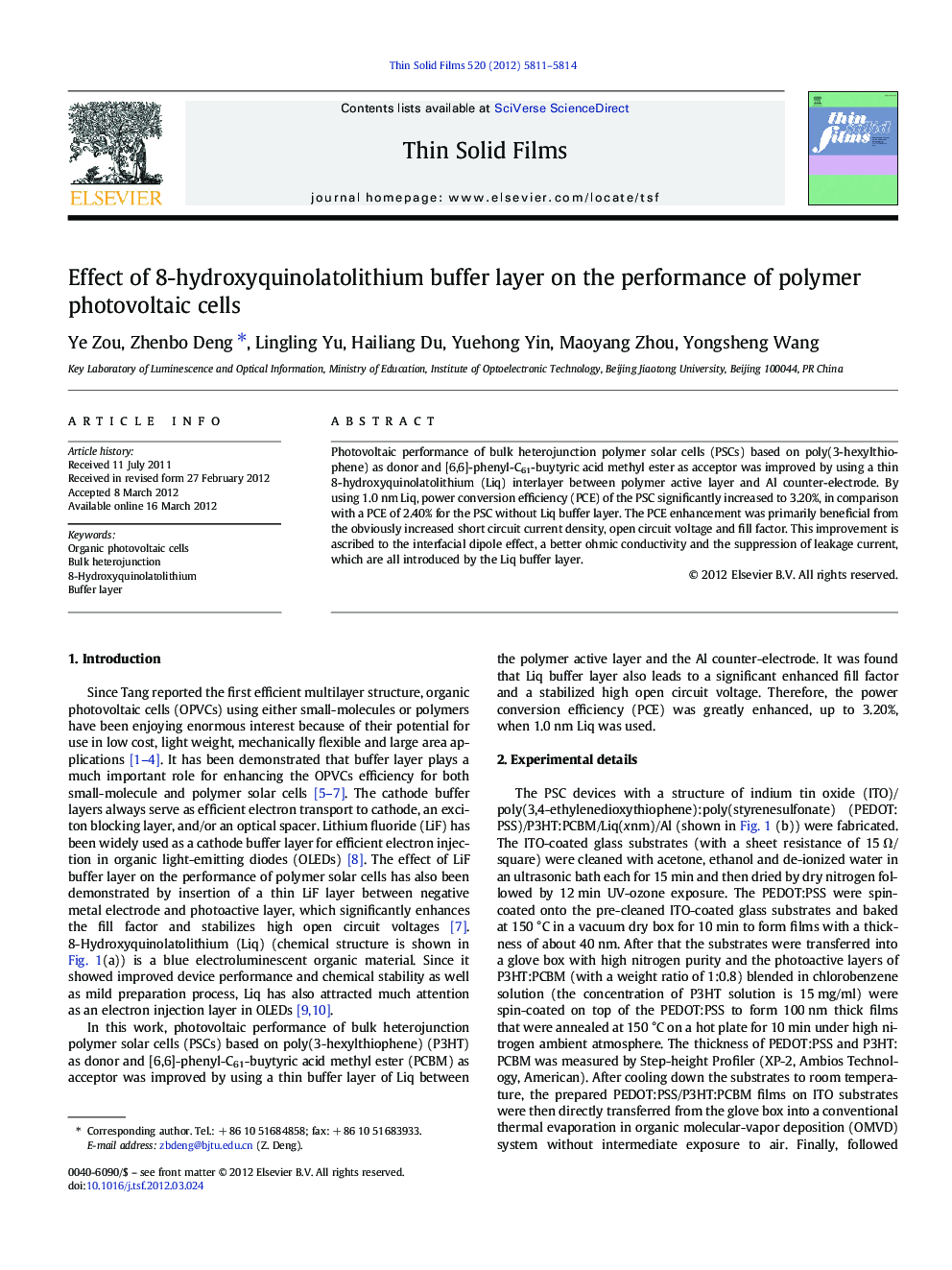| Article ID | Journal | Published Year | Pages | File Type |
|---|---|---|---|---|
| 1667446 | Thin Solid Films | 2012 | 4 Pages |
Photovoltaic performance of bulk heterojunction polymer solar cells (PSCs) based on poly(3-hexylthiophene) as donor and [6,6]-phenyl-C61-buytyric acid methyl ester as acceptor was improved by using a thin 8-hydroxyquinolatolithium (Liq) interlayer between polymer active layer and Al counter-electrode. By using 1.0 nm Liq, power conversion efficiency (PCE) of the PSC significantly increased to 3.20%, in comparison with a PCE of 2.40% for the PSC without Liq buffer layer. The PCE enhancement was primarily beneficial from the obviously increased short circuit current density, open circuit voltage and fill factor. This improvement is ascribed to the interfacial dipole effect, a better ohmic conductivity and the suppression of leakage current, which are all introduced by the Liq buffer layer.
► 8-hydroxyquinolatolithium as efficient electron buffer layer in polymer solar cells. ► Short circuit current density, open circuit voltage, fill factor were all increased. ► Power conversion efficiency significantly increased from 2.40 % to 3.20 %. ► Improvement due to interfacial dipole effect and suppressed leakage current.
